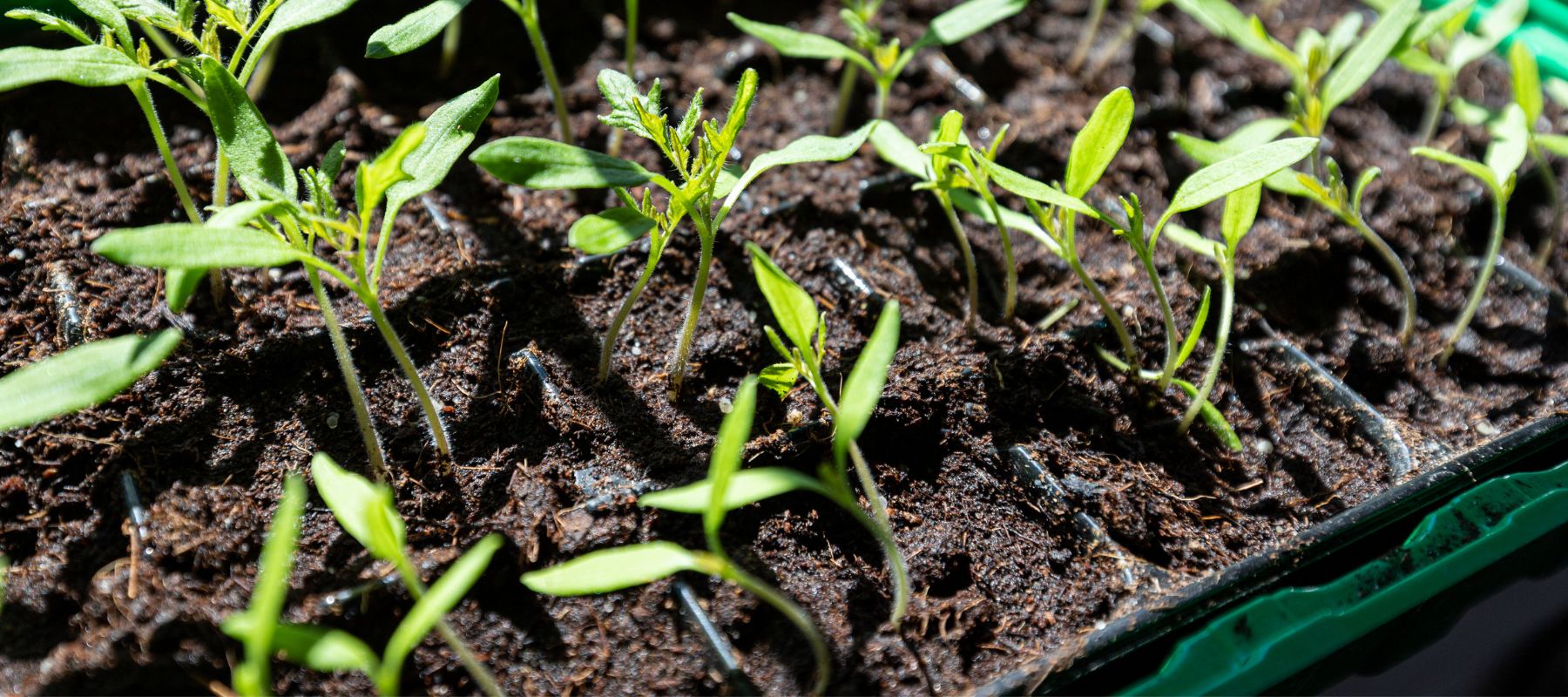Lesson 2 - Seed propagation

Seeds truly are amazing tiny living creatures. Everything you need for life is contained within the seed coat – a tiny embryonic plant and stored energy in the form of carbohydrates and proteins.
The structure of seed is fairly simple. The first sign of the development of a seedling is the emergence of the cotyledon which contain the first true leaves of a seedling. The hypocotyl region is the stem of the seedling that is found both above and below the surface of the soil connecting to the roots of the seedling. In an epigeal seedling the cotyledonary node is above the ground.
Seeds activate or start growing when they take up water, this is called imbibition. When the first baby root, the radicle, emerges this is sign that the seed is waking up from dormancy.
Watch the excellent timelapse below of a runner bean germinating.
Seed quality is directly proportional to seed germination rates. Good quality seed will ensure your rates of germination are high. Seed companies, Diggers included trial the viability of their seed stocks. However, not all seeds will germinate and there are many reasons for this, and we have covered some of them but let’s recap.
- Seed was too old or wasn’t stored properly
Keep records of where and when you got your seed. Seed lasts a few years after collection. To test the viability of seed, moisten some paper towel place some seeds in a line down the centre and roll it into a tube, make a circle and place it in the bottom of a jar, put it on a warm windowsill and keep it moist.
- Seed sown too deep or too shallow
Always check the sowing depth for seed to ensure that they are planted correctly otherwise they may not receive enough light to trigger germination. Alternatively, seeds that require dark for germination will need to be planted at least 5mm deep.
- Dry seed raising mix.
Make sure you check your seed trays at least twice a day to ensure they are moist enough. Keep away from direct sunlight and draughts. Add a transparent lid to retain moisture and ensure humidity.
- Soil temperature is too cold or too hot
Do not place your seed trays on the floor as cold air falls to the ground, nor close to a window where cold will come through the glass. If you can, use a heating mat under the tray. The ideal temperature would be 21 degrees.
In Australia, we sow many of our food crops directly into the soil by waiting for the soil to heat up to a favourable temperature for germination. We also sow directly into garden beds when the structure of a vegetable seedling might be damaged when transplanted, a good example are baby carrots.
To get ahead of the main growing season (in the southern states this includes Spring, Summer and Autumn) many gardeners like to produce seedlings while the weather is still cold. Seeds who prefer germination in a warm soil are better propagated in a seedling tray or punnet, many are members of the Solanaceae family - tomatoes, peppers, chilies, tomatillo and eggplant. Grown as seedlings ready for transplant they are larger and stronger by the time the southern states of Australia warm up and therefore produce earlier than if you wait for conditions outdoors to be germination ready. We also propagate seedlings that are slow growers like leeks and onions to get ahead when the growing season hits.
Diggers tip
In general, slower root vegetables are directly sown into the garden as are fast growing vegetables like Pak choy and salad leaves like roquette. Larger seeds with harder casings are also better sown directly after soaking in water overnight.
Further learning
How to sow carrots – Diggers Tutorial
How to sow onions – Diggers Tutorial
How to sow beetroot – Diggers Tutorial
How to prick out tomatoes – Diggers Tutorial
Sowing and growing swedes – Diggers Tutorial